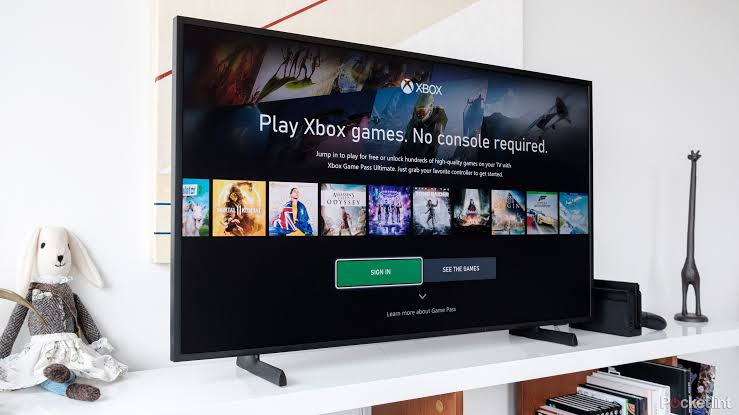In today’s world, gadgets are a key part of our daily lives. Devices like smartphones, tablets, smartwatches, and laptops help us stay connected, work better, and communicate easily. But gadgets do more than just serve practical purposes.
They are changing how we connect and build relationships. While they offer new ways to interact, they also bring concerns about how they affect face-to-face socializing, emotions, and personal connections. This article looks at both the good and bad ways gadgets influence social life and relationships today.
The Rise of Digital Connectivity
Gadgets have revolutionized communication by making it instantaneous and borderless. With a single device, individuals can video call a friend across continents, join a virtual meeting, or chat with multiple people at once through various platforms.
Social media apps, messaging services, and video conferencing tools are all facilitated by modern gadgets, allowing people to stay connected regardless of physical distance. In professional settings, gadgets enhance collaboration through tools like Zoom, Slack, and Microsoft Teams, enabling seamless communication among colleagues. In personal life, gadgets keep families and friends in touch, especially in long-distance relationships. These technological advancements have turned the world into a global village, where interaction is no longer limited by geography.
Positive Effects on Social Relationships
One of the most significant advantages of gadgets is their ability to maintain and even strengthen long-distance relationships. Whether it’s a student studying abroad, a parent working in another country, or couples in long-distance commitments, gadgets help bridge the gap. Regular video calls, voice messages, and instant texts keep emotional bonds alive. Gadgets also enable inclusivity and accessibility.
People with disabilities, introverts, or those dealing with social anxiety can use digital communication tools to connect with others in comfortable, non-threatening ways. Online communities and support groups flourish on digital platforms, giving people the opportunity to form meaningful relationships they might not have been able to pursue offline. Moreover, gadgets offer avenues for self-expression.
Social media platforms powered by these devices allow individuals to share their thoughts, art, and life stories. This constant flow of shared content fosters empathy, understanding, and emotional connection between users, sometimes even forming the foundation of deep friendships or partnerships.
The Dark Side of Gadget Dependency
Despite these benefits, the overuse and misuse of gadgets have led to a significant deterioration in the quality of face-to-face interactions. A common sight in today’s society is a group of people physically together but mentally distant, each engrossed in their own screens. This digital distraction diminishes genuine interaction, reduces eye contact, and hinders the development of deep emotional connections.
One of the primary concerns is “phubbing,” a term used to describe the act of snubbing someone in a social setting by focusing on a mobile phone instead. This behavior sends a message that the person on the screen is more important than the person physically present, leading to feelings of neglect and frustration. Over time, such habits can damage trust, intimacy, and satisfaction in relationships.
Gadget addiction is another emerging issue. Constant notifications, social media validation, and digital multitasking can lead to an overreliance on gadgets, disrupting daily routines and weakening family bonds. Studies have shown that excessive gadget use correlates with increased levels of anxiety, depression, and loneliness, particularly among teenagers and young adults who are heavily immersed in virtual social worlds.
Gadgets and Family Dynamics
Family life has not been immune to the influence of gadgets. In many households, shared meals and conversations are replaced with individual screen time. Children and adolescents often retreat into their digital devices, limiting their exposure to real-world communication and social skills. Parents, too, may become preoccupied with work emails, news feeds, or online entertainment, setting poor examples for their children.
This digital divide within families can hinder emotional connection and understanding. Quality time, once filled with shared activities and storytelling, is now fragmented by constant digital interruptions. While gadgets can be used to bond—through watching movies or playing games together—they often end up isolating family members under the guise of entertainment or productivity.
Social Media and the Illusion of Connection
Gadgets and social media are tightly interwoven, and this connection often creates the illusion of meaningful interaction. Online likes, comments, and reactions give a sense of social engagement, but they rarely replace the depth of offline conversations. Many people mistake online activity for true intimacy, leading to superficial connections that lack emotional depth and vulnerability. Moreover, social media, accessible through gadgets, fuels comparison and envy. Constant exposure to curated, idealized versions of others’ lives can distort self-perception and breed dissatisfaction in personal relationships. This is particularly problematic in romantic relationships, where social media activity may trigger insecurity, jealousy, or misunderstandings.
Digital Communication vs. Face-to-Face Interaction
While digital communication offers convenience, it lacks the nuances of in-person interaction. Facial expressions, tone of voice, and body language are critical components of effective communication that gadgets often fail to capture. Misinterpretations are common in text-based messages, leading to unnecessary conflict or confusion. Furthermore, dependence on gadgets can erode conversational skills. People may find it difficult to engage in spontaneous dialogue, listen attentively, or express emotions authentically without the buffer of a screen. This decline in social skills is particularly evident in younger generations who grow up immersed in digital environments.
Strategies for Healthy Gadget Use
Acknowledging the impact of gadgets on relationships does not mean advocating for their elimination. Instead, it calls for mindful and balanced use. Establishing digital boundaries—such as screen-free meals, tech-free bedrooms, or scheduled “unplugged” time—can help restore personal connections. Engaging in digital detoxes, where gadgets are set aside for specific periods, encourages individuals to reconnect with the physical world. It also fosters appreciation for non-digital interactions. Parents and educators can play a key role in modeling healthy gadget behavior and promoting digital literacy that prioritizes empathy, responsibility, and self-regulation.
Conclusion
Gadgets are useful tools that can bring people together or make them feel alone. They have made communication easier but also created new problems for relationships and emotions. The important thing is to use gadgets to support, not replace, human connection. As technology grows, keeping real and deep relationships means making an effort. By balancing digital life and real life, people can make sure technology helps their social lives instead of hurting them.



